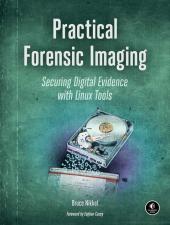“Despite the huge impact of this subject matter, there have been precious few books on the topic to date. Luckily, Practical Forensic Imaging steps in now to fill the gap. An excellent addition to any bookshelf.”
—Forensic Focus
One of Opensource.com's "Hot open source books" of 2016
“I am a big fan of this book, and found it to contain the right amount of technical content coupled with important concepts and concerns surrounding forensic imaging. I’d encourage anyone in DFIR who is imaging regularly or looking to increase their Linux skills to check out a copy of the book.”
—505 Forensics
The International Society of Forensic Computer Examiners (ISFCE) added Practical Forensic Imaging to their list of suggested study materials!
Practical Forensic Imaging is featured on Linux Journal.
“Cybercrime and digital forensics expert Bruce Nikkel describes the use of open source command line technology to obtain and manage forensic data. Target readers are the expanding number of forensic practitioners including forensic and electronic discovery technicians in legal, auditing, and consulting firms; incident response teams; law enforcement forensic specialists; and forensic investigators.”
—The Lawyer's PC
“It's commonly said that you should assume the bad guys have already breached your networks. The ability to carry out forensic examinations is one of the key skills you'll need in response to that risk, and this book is a solid introduction to acquiring those skills.”
—Network Security Newsletter
"I loved Bruce Nikkel's book Practical Forensic Imaging from @nostarch - but his new book Practical Linux Forensics is 🔥🔥🔥 Beginner to intermediate, and a good desktop reference."
—DFIRScience, @DFIRScience

